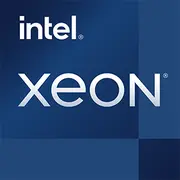Intel Xeon E-2286M

인텔 제온 E-2286M: 전문가를 위한 성능과 신뢰성
2025년 4월
모바일 프로세서 세계에서 인텔 제온은 항상 전문 작업을 위한 신뢰성과 성능을 연상케 합니다. 2019년에 출시된 제온 E-2286M 모델은 여전히 프리미엄급 워크스테이션 및 비즈니스 노트북 세그먼트에서 актуální합니다. 2025년에 이 CPU가 누구에게 적합한지, 그리고 어떤 이점을 제공하는지 살펴보겠습니다.
아키텍처 및 기술 공정: 커피 레이크 14nm
E-2286M 프로세서는 커피 레이크 마이크로아키텍처를 기반으로 하며, 14nm 공정을 사용합니다. 인텔이 이미 10nm 및 7nm(하이브리드 모델)으로 이전한 것에 비해, 14nm는 여전히 기업 부문에 안정적인 플랫폼으로 남아 있습니다.
- 코어 및 스레드: 8코어 및 16스레드. 기본 클럭 속도는 2.4GHz, 최대 터보 모드에서 1코어의 경우 5.0GHz, 모든 코어에서 4.4GHz입니다.
- 통합 그래픽: 인텔 UHD 그래픽스 P630으로, 기본 클럭 속도는 350MHz, 최대 클럭 속도는 1.25GHz입니다. 4K 디스플레이 및 비디오 인코딩/디코딩(HEVC, VP9)을 위한 하드웨어 가속을 지원합니다.
- 캐시: 16MB 스마트 캐시.
아키텍처의 특징:
- ECC 메모리(Error-Correcting Code) 지원 — 이는 제온의 주요 특징으로, 중요한 작업에서 오류를 방지하는 데 도움이 됩니다.
- 가상화(VT-x, VT-d) — 개발자 및 IT 인프라에 중요합니다.
- 인텔 vPro — 기업 장치의 원격 관리 및 보안을 위한 기술입니다.
전력 소비 및 TDP: 45W — 균형인가, 타협인가?
TDP(Thermal Design Power)는 45W로, 이 프로세서는 강력한 냉각 시스템이 포함된 노트북 — 워크스테이션 또는 "두꺼운" 비즈니스 모델에 적합하다는 것을 나타냅니다.
- 열 방출: 부하 하에서(예: 렌더링) 온도가 95~100°C에 도달할 수 있어, 고품질의 열관이 및 팬이 필요합니다.
- 전원 절약 모드: Intel Speed Shift(빠른 클럭 전환), 동적 전압 관리(DVFS). 유휴 상태에서는 클럭 속도가 1.2GHz로 하락하여 전력 소비가 10~15W로 줄어듭니다.
성능: 실제 작업 및 터보 모드
Geekbench 6의 데이터에 따르면(단일 스레드 1535, 다중 스레드 6753), E-2286M은 2025년에 최신 중급 CPU와 경쟁하지만, 5nm의 최신 모델들에는 뒤처집니다.
- 사무 작업: 문서 작업, 브라우저(20개 이상의 탭), 화상 회의할 때 로드는 10%~20% 범위입니다. 멀티태스킹 시에도 지연이 없습니다.
- 멀티미디어:
- Premiere Pro에서 4K 비디오 렌더링: 8코어 부하 시 6코어 CPU와 비교하여 내보내기 시간이 30% 단축됩니다.
- Blender(Cycles) 작업: 16스레드로 평균 장면을 5~7분 내에 처리합니다.
- 게임: 통합 그래픽 P630은 AAA 프로젝트에는 적합하지 않습니다. Dota 2(Full HD, 낮은 설정)에서는 40~50FPS. 게임을 하려면 전용 그래픽 카드(NVIDIA RTX 3050 등)가 필요합니다.
- 터보 모드: 단기 부하(애플리케이션 실행, 코드 컴파일)에서 클럭 속도가 5.0GHz로 증가하지만, 30~60초 후에는 과열로 인해 스로틀링이 발생합니다.
사용 시나리오: 제온 E-2286M이 필요한 사람은?
1. 엔지니어 및 디자이너: CAD 애플리케이션(AutoCAD, SolidWorks)은 안정적인 멀티 스레드 작업과 ECC 메모리를 요구합니다.
2. 개발자: 대규모 프로젝트 컴파일, 가상화(Docker, VMware).
3. 분석가: Python/R에서 빅 데이터 처리.
4. 기업 사용자: 보안(vPro) 및 원격 관리.
적합하지 않은 사람:
- 게이머(전용 GPU가 없는 경우).
- автоном성을 중요시하는 사용자(아래 참조).
자율성: 성능의 대가
E-2286M이 탑재된 노트북은 보통 중간 부하(웹 서핑, 사무 작업) 시 4~5시간 이상 지속적으로 작동하지 않습니다. 그 이유는 높은 TDP와 최신 에너지 효율적인 코어(인텔 12세대 하이브리드 CPU에 비해)의 결여 때문입니다.
전력 절약 기술:
- 인텔 다이나믹 튜닝: 배터리 모드에서 성능을 자동으로 제한합니다.
- Ultra Low Power States: 주변 구성 요소를 위한 깊은 수면 상태.
조언: 90W·h 배터리가 장착된 모델을 선택하세요(예: Dell Precision 7550) — 이는 작동 시간을 6~7시간으로 늘릴 수 있습니다.
경쟁사 비교: AMD, 애플 및 기타
- AMD 라이젠 9 6900HX(2022, 6nm, 8코어/16스레드):
- 멀티 스레드 작업에서 더 높은 성능 (+15% Cinebench R23).
- 더 우수한 통합 그래픽(Radeon 680M).
- ECC 메모리 지원 없음.
- 애플 M2 프로(2023, 5nm, 10코어):
- 40% 더 에너지 효율적입니다.
- 단일 스레드 작업에서 더 높은 속도.
- Windows 소프트웨어와의 호환성 문제.
- 인텔 코어 i9-11980HK(2021, 10nm, 8코어/16스레드):
- 유사한 성능, 하지만 ECC 및 vPro 없음.
결론: 제온 E-2286M은 속도와 에너지 효율성에서는 뒤처지지만, 기업 분야에서의 신뢰성에서는 우위를 점하고 있습니다.
장점과 단점
강점:
- ECC 메모리 및 vPro 지원.
- 장시간 부하에서의 안정성.
- 멀티 스레드 작업에서의 우수한 확장성.
약점:
- 구형 14nm 기술 공정.
- 높은 열 방출.
- 약한 통합 그래픽.
노트북 선택 추천
- 장치 유형: 워크스테이션(Dell Precision, HP ZBook) 또는 비즈니스 노트북(Lenovo ThinkPad P15).
- 냉각: 최소 두 개의 팬 및 네 개의 열관이 필요합니다.
- 추가 사항:
- 전용 그래픽 카드(NVIDIA RTX A2000 또는 유사 제품).
- 32GB 이상의 DDR4 ECC 메모리.
- 2TB NVMe SSD.
2025년 모델 예시:
- Dell Precision 7670: $2500부터.
- HP ZBook Fury 16 G9: $2800부터.
최종 결론
인텔 제온 E-2286M은 신뢰성이 중요한 이들을 위한 선택입니다. 이는 다음과 같은 경우에 이상적인 CPU입니다:
- 보안 요구가 있는 기업 워크스테이션.
- ECC 메모리를 사용하는 엔지니어링 작업.
- 자율성보다 안정성을 더 중요시하는 사용자.
비교적 이동 중 영상 렌더링이나 게임을 위한 노트북이 필요하다면, 라이젠 9 또는 인텔 코어 12세대가 탑재된 모델을 고려하십시오. 그러나 비즈니스 및 전문 환경에서 제온 E-2286M은 2025년에도 검증된 해결책으로 남아 있습니다.
기초적인
CPU 사양
메모리 사양
GPU 사양
여러 가지 잡다한
벤치마크
다른 CPU와 비교
소셜 미디어에서 공유하기
또는 링크로 소개하기
<a href="https://cputronic.com/ko/cpu/intel-xeon-e-2286m" target="_blank">Intel Xeon E-2286M</a>